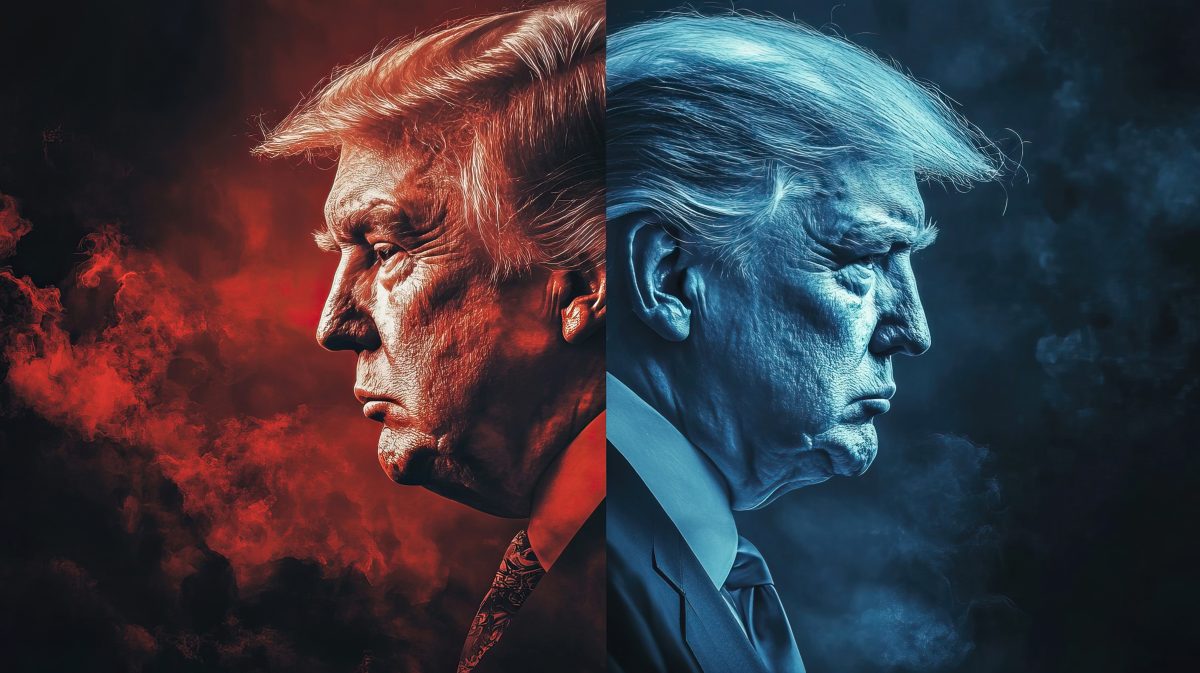Biden vs Trump economic plans: who has the better approach?
Biden vs Trump economic plans show two contrasting visions for America’s financial future. Biden promotes sustainable growth, while Trump prioritizes rapid stimulus.
These differences reflect deeper beliefs about how to guide the economy. One focuses on long-term investment, the other on immediate relief.
Understanding their economic plans and strategies can help voters anticipate changes in jobs, taxes, and industry development.
Overview of Biden’s economic policies
Biden’s economic plans agenda centers on long-term stability and inclusive growth. His approach targets infrastructure, healthcare, and environmental reform.
These initiatives aim to modernize essential sectors while addressing inequality. The administration seeks to improve public services and workforce development.
The plan relies on federal investment and higher taxes for the wealthy to fund programs with long-lasting economic benefits.
Key Features of Biden’s Economic Policies
Biden’s plan focuses on broad reforms designed to reshape the economy for long-term success.
-
Infrastructure Investment: Biden advocates for a significant overhaul of the nation’s infrastructure, including roads, bridges, and public transportation systems.
-
Green Energy Initiatives: He aims to transition to clean energy, targeting investments in renewable resources to combat climate change.
-
Healthcare Access: Strengthening healthcare access and affordability plays a crucial role in his economic vision.
-
Tax Policies: Biden’s plans include increasing taxes on the wealthy to fund various social programs, while providing relief to the middle class.
This combination of investment and social programs is intended to create sustainable growth. It also aims to reduce wealth disparities across communities.
Overview of Trump’s economic strategies
Trump’s economic plans focus centered on reducing barriers for businesses. His plan relied on tax cuts, deregulation, and expanding traditional industries.
By lowering taxes and loosening rules, his administration aimed to encourage investment. These strategies sought to accelerate short-term growth and business confidence.
The plan promoted free-market solutions as the path to job creation and economic strength.
Key Elements of Trump’s Economic Strategies
Trump focused on fewer restrictions and increased autonomy for the private sector.
-
Tax Cuts: One of the hallmark strategies was the Tax Cuts and Jobs Act, which lowered corporate tax rates to encourage business expansion.
-
Deregulation: A push to reduce regulations aimed to alleviate burdens on businesses, making it easier for them to operate.
-
Trade Policies: Trump implemented tariffs on imports to protect American industries, especially in manufacturing and agriculture.
-
Energy Independence: His strategies supported the fossil fuel industry, aiming for U.S. energy independence and the expansion of domestic resources.
His policies favored rapid growth and lower government intervention. Supporters credited these changes with strengthening business performance.
Comparative analysis of both plans

Comparing Biden and Trump’s plans reveals sharply different paths to economic plans growth. Both focus on job creation but use opposite tools to get there.
Biden favors public investment and regulation to address long-term issues. Trump promotes deregulation and tax relief to trigger short-term gains.
These contrasting strategies reflect opposing views on government’s role in shaping economic outcomes.
Tax Policy
Their approaches to taxation highlight their priorities and intended beneficiaries.
-
Biden: Proposes increasing taxes on top earners.
-
Trump: Advocated for lowering corporate taxes and providing tax relief.
-
Expected Outcomes: Biden’s plans aim for wealth redistribution, while Trump’s focus is on economic growth through increased spending.
Biden’s plan targets equity; Trump’s seeks growth via investor confidence. The impact depends on how gains are distributed.
Regulatory Approach
Each candidate’s stance on regulation influences business operations and compliance costs.
-
Biden: Supports more regulations for environmental protections.
-
Trump: Pushed for deregulation to empower businesses.
-
Impact: Biden’s approach may lead to higher compliance costs, while Trump’s could stimulate short-term growth.
Regulation impacts industries differently, shaping how companies plan for risk, expansion, and innovation.
Impact on small businesses
Small businesses feel direct effects from both Biden’s and Trump’s policies. Each plan provides unique forms of support or relief.
Biden emphasizes expanding access to funding and benefits. Trump focused on lowering costs and increasing flexibility for entrepreneurs.
Understanding these differences helps small business owners plan for growth or prepare for regulatory changes.
Biden’s Approach to Small Businesses
Biden’s focus is on inclusive support for business growth and stability.
-
Grants and Funding: Biden has proposed programs that offer financial assistance to small businesses, particularly those owned by minorities and women.
-
Tax Incentives: His plan includes tax credits for small businesses that provide health care and other benefits to employees.
-
Affordable Access: Initiatives are in place to improve health care access for small business employees, reducing costs for employers.
This strategy aims to create a fairer business environment while promoting resilience among underserved communities.
Trump’s Focus on Small Businesses
Trump aimed to minimize government interference and unleash private sector potential.
-
Tax Cuts: The Tax Cuts and Jobs Act significantly reduced the tax burden on small businesses, encouraging investment and expansion efforts.
-
Deregulation: By rolling back regulations, Trump aimed to reduce compliance costs for small businesses, thereby freeing up resources for growth.
-
Access to Markets: Trump emphasized opening international markets, helping small businesses export more goods abroad.
His approach empowered business owners by cutting red tape and emphasizing autonomy.
Long-term effects on the economy
The long-term impact of these plans reaches beyond headlines. They shape national debt, job markets, and global competitiveness.
Biden’s model invests in modern infrastructure and clean energy to build future-ready systems. Trump’s plan aimed to drive immediate market growth.
Each plan sets a distinctly different course for the U.S. economy, shaping its direction over the next decade and potentially influencing generations to come.
Long-term Growth Perspectives
Biden’s strategy is designed to build lasting value and improve stability.
-
Green Jobs: Investments in renewable energy could lead to millions of new jobs over the next decade.
-
Infrastructure Development: Upgrading infrastructure will likely enhance efficiency, stimulating commerce and trade.
-
Social Safety Nets: Strengthened social programs can create a more stable workforce, increasing overall productivity.
These policies aim to protect both the economy and the environment while boosting employment.
Trump’s Approach and Its Implications
Trump’s strategy prioritized quick results with less focus on long-term risks.
-
Increased National Debt: Significant tax cuts, without corresponding spending cuts, may exacerbate national debt levels in the long run.
-
Industry Support: Emphasis on traditional industries, like fossil fuels, can create jobs but may risk long-term environmental issues.
-
Trade Policies: Protectionist trade measures could lead to trade wars, potentially harming economic expansion.
His legacy depends on how these choices affect future fiscal stability and global trade relations.
Public opinion on economic plans

Public opinion plays a vital role in how these policies are received and maintained. Support or criticism can shape future policy directions.
Voters base opinions on personal experience, economic performance, and media coverage. These views can shift over time.
Each plan’s popularity reflects broader beliefs about fairness, opportunity, and economic freedom.
Opinion on Biden’s Economic Plans
Many voters see Biden’s plans as inclusive and future-focused, though concerns about tax hikes remain.
-
Support for Job Creation: Many Americans appreciate Biden’s focus on creating jobs through investments in infrastructure and clean energy.
-
Concerns about Taxes: Some voters worry about the potential tax increases, fearing they may burden businesses and middle-income families.
-
Environmental Focus: Supporters feel positively about his commitment to tackle climate change through economic policies.
Public response often hinges on whether benefits are felt across all income levels.
Perceptions of Trump’s Economic Policies
Trump’s economic message resonated with those seeking fast recovery and low government involvement.
-
Favorable Business Climate: Many small business owners felt empowered by the tax cuts and reduced regulations, enabling them to expand.
-
Concerns about National Debt: Critics express concern about rising national debt due to tax cuts that didn’t remove spending.
-
Trade Policies: Opinions are divided on Trump’s tariffs, with some supporting protectionism and others fearing trade wars.
These mixed views highlight how economic policy impacts trust and voting behavior nationwide.
FAQ – Questions about Biden vs Trump Economic Plans
What are the main differences between Biden’s and Trump’s economic plans?
Biden focuses on sustainable growth and job creation in green sectors, while Trump emphasizes tax cuts and deregulation to boost immediate economic growth.
How do public opinions shape economic policies?
Public opinions can influence policy decisions as voter perceptions of each plan’s benefits or drawbacks may pressure leaders to adjust their strategies.
What impact do economic plans have on small businesses?
Economic plans can directly affect small businesses through tax policies, access to funding, and regulatory environments, which influence their ability to grow and thrive.
What is the long-term effect of these economic strategies?
Each administration’s strategies have potential long-term consequences for economic stability, growth patterns, and how businesses operate in the future.